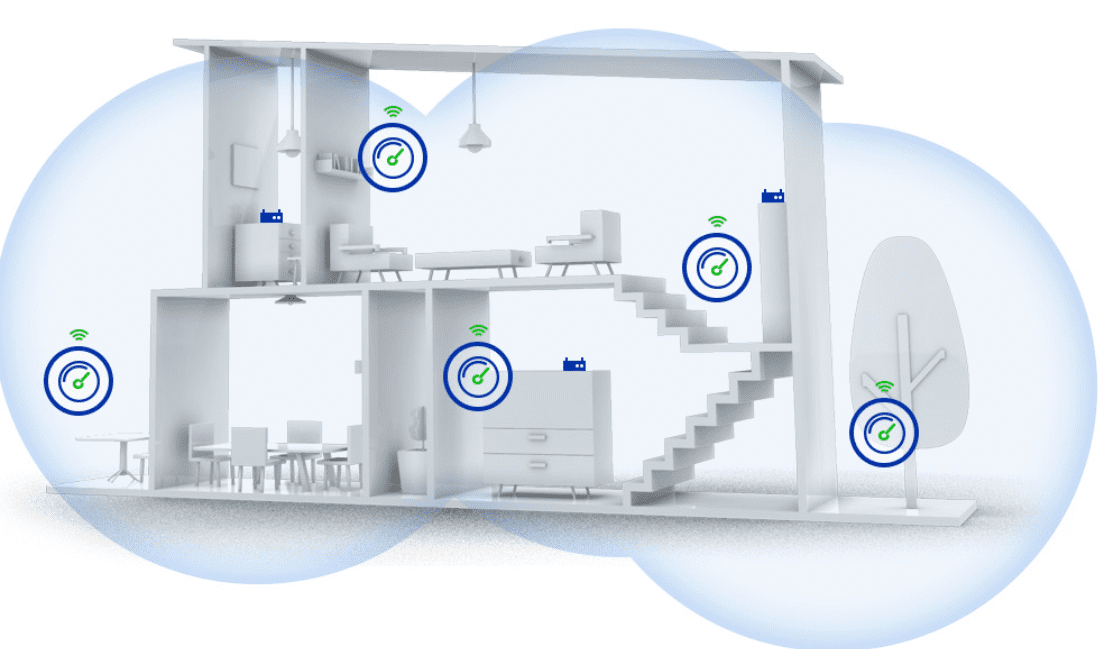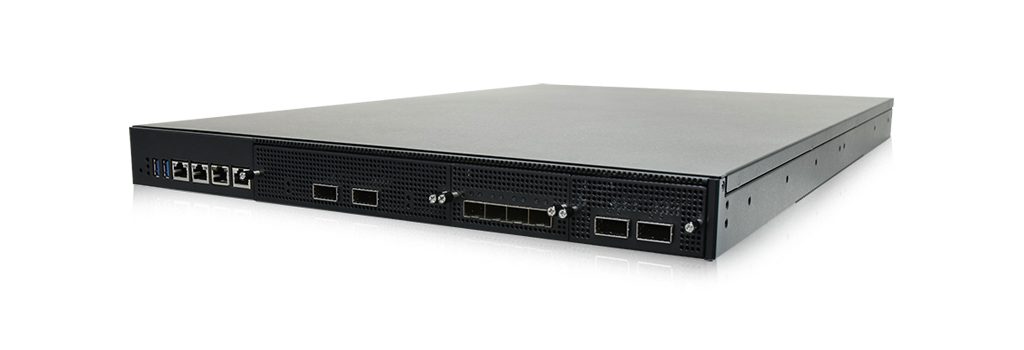Tired of dead zones and weak signals in your home Wi-Fi network?
Suffering from a weak signal from your wireless router?
Then Wi-Fi mesh may be a solution for you as it solves all these issues which traditional routers cannot solve.
In this blog, we want to give you a quick overview of what Wi-Fi Mesh is, the advantages/disadvantages of Mesh Wi-Fi systems, and how they are different than Wi-Fi extenders.
Mesh Wi-Fi systems are very popular today. They are available from many vendors compatible with Wi-Fi-5 and/or Wi-Fi 6 (E)
Why do you need a Wi-Fi mesh?
A regular router works fine if you have a small office or home Wi-Fi network. But if you have an apartment complex or a bigger office, you might face problems. Most likely, you will have dead spots with no coverage or very little coverage in some areas.
What is Wi-Fi mesh?
A Wi-Fi mesh or mesh network is a group of wireless nodes that work together to extend coverage beyond the reach of individual nodes. Instead of relying on a single node as a gateway for everyone else in the area, each node acts as a relay station, passing data to the next node. This allows you to connect to the Internet even if you’re outside the range of your primary connection.
Mesh systems are great for expanding connectivity in an existing network. For example, you could add a few mesh units to an area that doesn’t have much coverage. Or, you could install a couple of mesh units in an area with a lot of coverage.
In either case, a mesh system allows you to extend your range while still maintaining a strong connection.
At this point, it is very important to bring the discussion of Wi-Fi extenders as many people ask this question; after all, Wi-Fi extenders also solve the Wi-Fi coverage and dead zone issues.

Fig: what is Wi-Fi Mesh ( Reference: Linksys)
What’s the difference between Mesh Wi-Fi and a Wi-Fi Extender?
A Wi-Fi extender is used to extend the coverage of a Wi-Fi router. For example, a two-story house might require a separate Wi-Fi extender on the 1st floor if the ground has a Wi-Fi router. The downside is that one needs to manually switch the signal depending on the proximity, as both Wi-Fi devices broadcast different SSIDs, so the user must select one of them manually.
Mesh Wi-Fi is much faster and more efficient at providing a Wi-Fi signal than range extenders. Because a mesh system creates a “mesh” of signals, it can deliver a strong signal to every area without constantly reconnecting to a different network. That is mesh system is a single network/single SSID. A user connects to only one network
When moving around a large space, a mesh system allows you to roam seamlessly from one part of the house to another. If you’re trying to access a particular device, the mesh system will automatically find the fastest path to reach it. With a range extender, however, you’ll have to manually rejoin the new network whenever you move into a new area.
Mesh routers allow multiple router units to communicate with one another flexibly to provide the best possible coverage to users, which is a huge benefit versus Wi-Fi extenders which only talk to the main router.
How do you add mesh routers to the current network?
While Mesh routers are sold as a separate package of two or more routers. Adding a mesh node to your current Wi-Fi router is possible without replacing it. Normally known brands of Wi-Fi routers allow compatible mesh routers from the same vendor for seamless expansion of the current Wi-Fi router without rip and replacement.
The benefits of mesh routers
Extending coverage is the obvious advantage of mesh routers, but that is not the only one.
Mesh networks can extend beyond the range of individual devices, creating a larger coverage area. And because each node relays data throughout the network, it doesn’t rely on one central hub for connectivity. These features make mesh-routers ideal for small businesses/larger homes looking for a cost-effective solution.
The other significant advantage of mesh routers is the ease of integration and configuration. They often come preconfigured, making setup fast and simple. Some models allow for automatic configuration based on location. Often, they come associated with Mobile apps that make configuration a breeze.
The drawbacks of mesh routers
One of the biggest differences between mesh routers and standard routers is price. Mesh routers tend to cost more than standard routers, which makes sense considering the added complexity of the technology.
Can there be a wired mesh network?
While mesh routers are normally used in a wireless network. They can seamlessly work with wired connections too. Considering that some part of the house is already wired using ethernet cables, Mesh routers can be added to the network. The ethernet cable can be plugged into the LAN port of the Wi-Fi Mesh router; that way Wi-Fi network can be extended in a home using a wired network. There are some benefits of using a wired network; while a wireless network is susceptible to coverage issues, signal degradation, and obstruction from walls and floors, using cables overcomes all these issues providing faster speed throughout the home
Conclusion:
Wi-Fi mesh is a dispensable part of smoothly extending the coverage of a Wi-Fi network. They offer far more flexibility than Wi-Fi extenders or repeaters. The convenience of having a single network to seamlessly connect anywhere in the Wi-Fi zone is important from a user experience point of view. They are easy to install and configure. Not to forget they offer better performance than the Wi-Fi extenders. Today some Wi-Fi access points come with the Wi-Fi mesh feature. So, if you are looking for a Wi-Fi access point, make sure it has the Wi-fi mesh feature. Their initial cost may be more but in the long run, you get better coverage and user experience.
About Lanner’s Wi-Fi Mesh router
Lanner is a leading manufacturer of white boxes and uCPE solutions for a variety of telecom applications like SDN, NFV, SD-WAN, Open RAN, Orchestration, etc. It operates in the US through Whitebox Solutions (www.whiteboxsolution.com)
Lanner’s LWR-X8460 is a high-capacity Wi-Fi 6E tri-band Access point that supports mesh capabilities. It supports 4×4 MU-MIMO in 2.4GHz, 5GHz, and 6GHz Tri-band and supports IEEE 802.11a/b/g/n/ac/ax standards that offer fast and secure Wi-Fi connectivity.
References
https://www.tomsguide.com/us/what-is-mesh-wifi-router,news-24580.html








